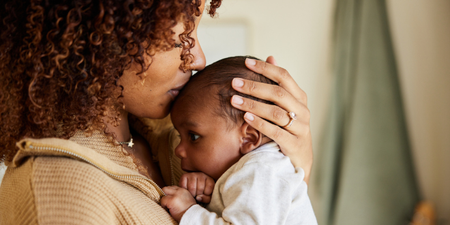If there is one thing that would have made those first weeks of motherhood easier, it is if babies came out with an instruction manual attached, no?
How handy!
Unfortunately, that’s not how it works, and parents have to hit the ground running, learning the hard way how to do anything from changing really gross nappies to decoding their babies whimpers and cries.
The crying thing baffled me to begin with. Like; what did it mean? Was she cold? Warm? Sad? Wet? Starving to death?! So hard to know! (Which meant that I usually tried to ease whatever could be wrong with her until she would finally stop crying!)
What I could have done with in those early days of motherhood, I think, is this incredibly handy feeding cheat sheet (thank you, Australian government!), helping you recognise your baby’s hunger cues, when they’re simply too upset to feed, and tips on how to calm them. It is basically Super Nanny – in leaflet form!
The thing is, even though newborns seem like helpless little creatures, they do actually have the ability to communicate with us, if we just know how to decipher their cues. And with the help of this chart, it will make it easier, especially for new parents, to know if you newborn is hungry, really hungry, or so completely famished that they’re going to need some soothing before they’ll be calm enough to feed.
This is what breastfeeding counsellor with the Australian Breastfeeding Association, Simone Casey, had to say to Babyology about the handy chart:
“Often when bubs first wakes, parents may get a little bit wrapped up in nappy changing or get exciting just talking to their baby, not realising that when their baby starts crying, it is well past hunger, baby gets frantic and it’s much much harder to latch him onto your breast with his head thrashing from side to side and arms flying everywhere.”
And as we all know, a calm baby is always easier to attach to your boob – meaning, you’ll be calmer too.
Casey, who is an International Board Certified Lactation Consultant, also outlined some newborn behaviours to watch for, to help new mums understand their baby’s feeding cues:
- After attaching to the breast, he will instinctively start to suck. Once the milk is flowing, baby will swallow, and usually fall into a ‘suck, swallow, breathe’ pattern.
- To know a baby is hungry, usually they will bob their head towards the breast, bring their hands to the mouth and open and close their mouth. Once near the breast, they will try to make their way there and usually start sucking vigorously if they’re hungry.
- Babies don’t only want to suck when they are hungry, though. Sometimes after they have sucked and swallowed well on the breast, they will come off and start sucking their hands and bobbing their head again. This may be more of a sign that they have wind or need a burp than wanting to feed again. We know this because they’ve just actually fed, and fed well.
- By giving your baby some upright time after feeds and a nice rub on the back, you may find this behaviour settles and his arms relax, usually a good sign they’re full and satisfied. If they’re still looking for more after the wind has settled, they may want a little top-up from the breast, but this may only be for a few minutes.
Did YOU struggle to read your baby’s signs and decode their cries in the beginning? It’s just as well it gets easier, isn’t it?!

















































